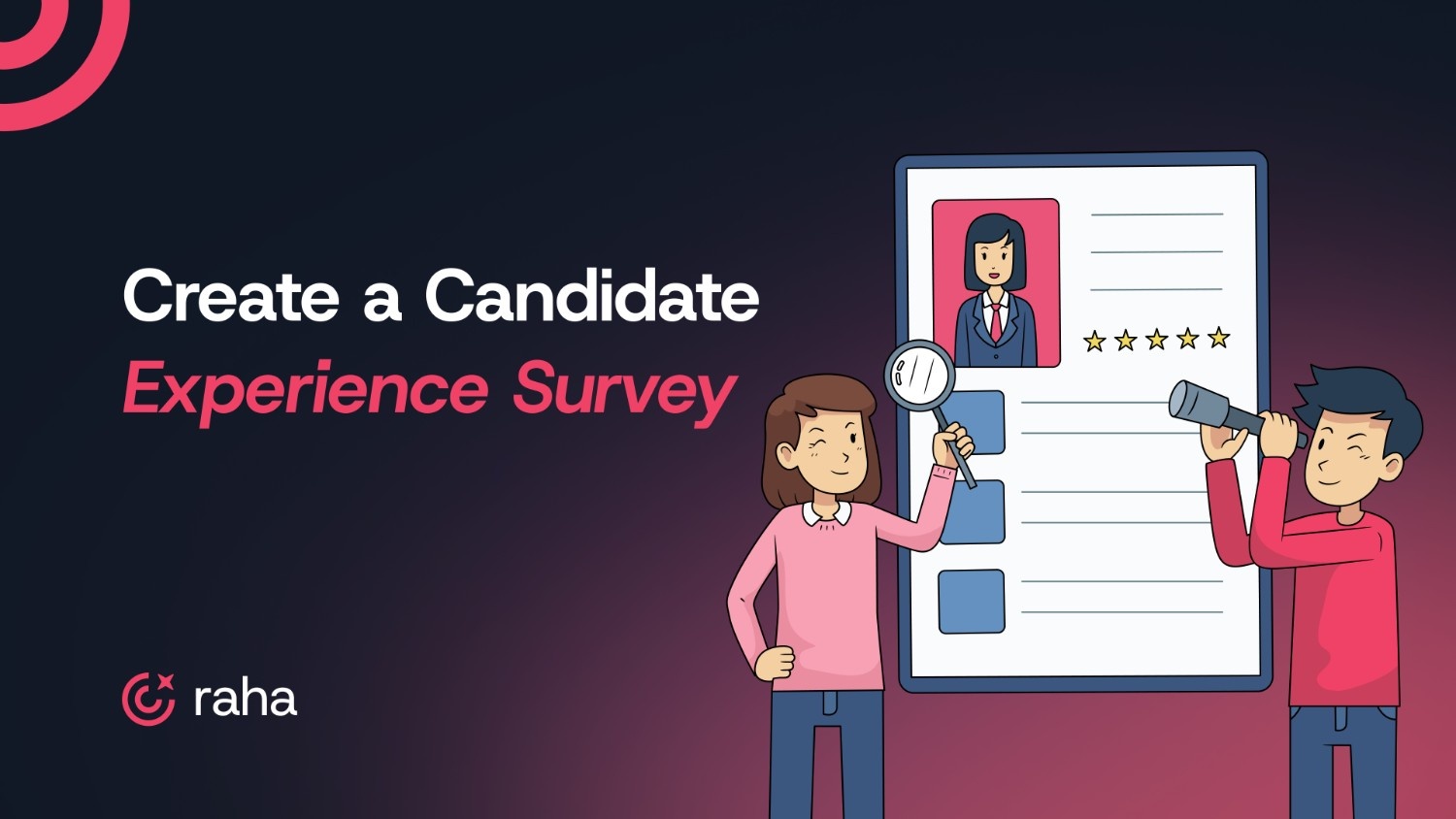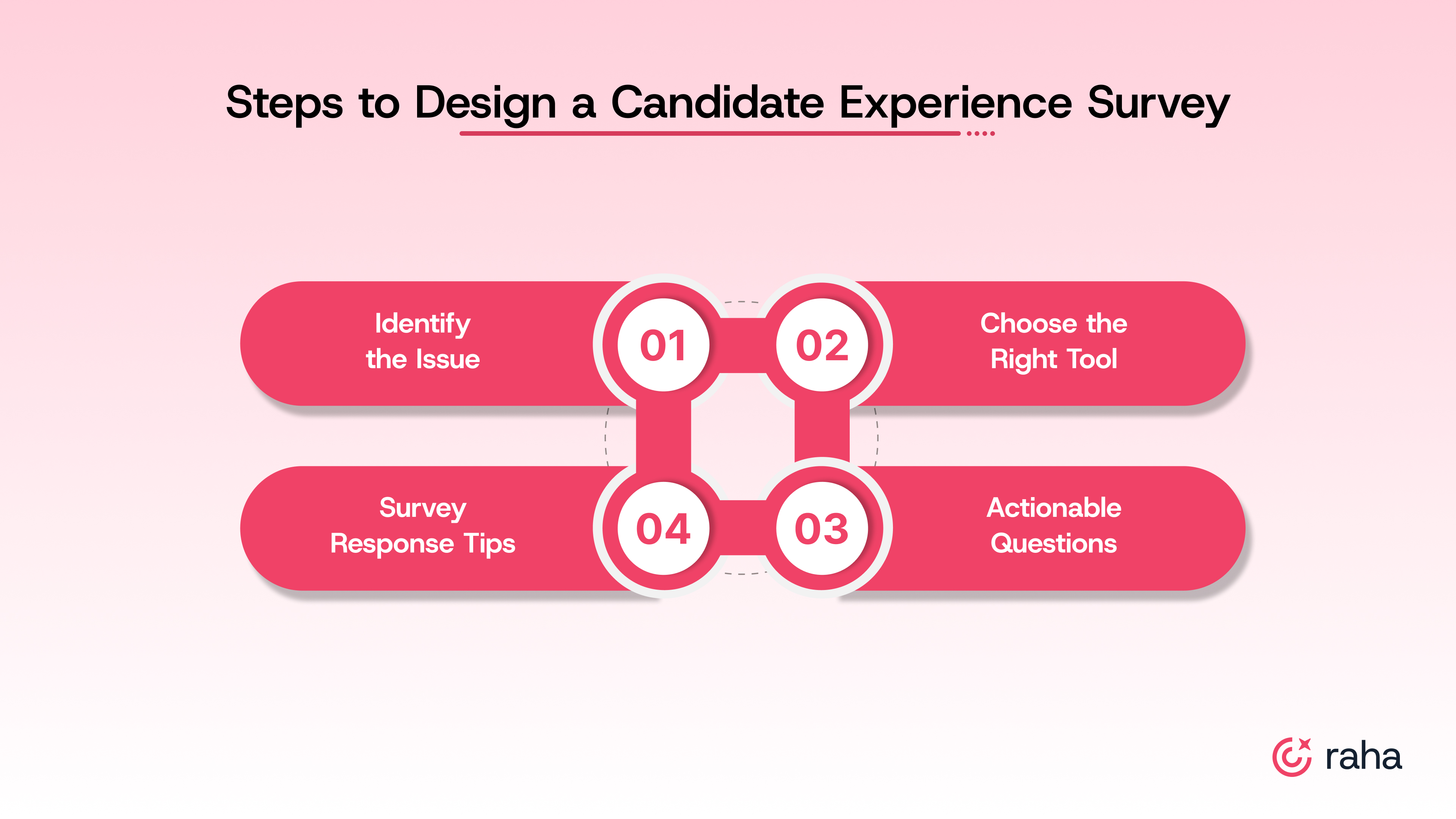
You don’t need another reminder that candidate experience matters. You’ve already seen the fallout every time a great candidate ghosts, drops mid-process, or turns down the offer without much explanation.
The problem is, most teams don’t know why it’s happening.
According to CareerArc, 60% of job seekers say they’ve had a poor candidate experience. That’s the majority, and most of those candidates won’t give you feedback unless you ask for it the right way.
That’s where candidate experience surveys come in.
It actually tells you where the process breaks, what frustrates candidates, and what’s making them drop.
In this guide, we’ll walk through how to build a survey that gives you real signals, so you can fix what’s slowing you down and build a hiring process candidates want to finish.
Key Takeaways
- A candidate experience survey helps identify pain points in the recruitment process, providing insights to enhance efficiency and candidate satisfaction.
- Timing matters, so send surveys while the candidate experience is still fresh for more accurate and actionable feedback.
- Use a variety of question types (rating scales, open-ended) to capture both quantitative and qualitative insights.
- Regular analysis of survey results helps pinpoint recurring issues and optimize hiring processes.
- Implementing feedback shows a commitment to improving the candidate experience, strengthening employer branding, and attracting top talent.
What is a Candidate Experience Survey and Why Does It Matter?
A candidate experience survey collects direct feedback from candidates about their hiring experience—what worked, what didn’t, and where things could be improved. It’s typically sent after key stages like a phone screen, interview loop, or rejection.
The goal is to capture their perspective while the experience is still fresh, so you can spot patterns and improve the process.
An ATS can show you where candidates exited the funnel. A candidate experience survey helps you understand why.
Here’s what that looks like in practice:
- A candidate completes the interview loop but declines your offer. The survey reveals that the process felt disorganized, or they didn’t get clear answers about growth.
- A rejected candidate gives high ratings but flags that communication dropped after the first round. You use that to tighten follow-up SLAs.
- You start to notice that candidates interviewing for a specific team consistently mention unclear expectations. That prompts a calibration session with the hiring manager.
This kind of feedback helps you catch issues early and make improvements that lead to a more consistent, candidate-friendly process.
How to Design a Candidate Experience Survey That Gets Responses
You’ve been here before. Someone suggests, “Let’s send a survey,” and next thing you know, you’re piecing together questions from old docs and Google searches, just trying to get it out the door. It goes live, gets a 3% response rate, and ends up buried in a shared drive, never to be seen again.
This time, let’s do it differently.

Step 1: Know What You’re Trying to Fix
Before you build anything, get clear on why you're sending the survey. Your objective will shape everything else, who you send the survey to, what you ask, and when you send it.
Use the table below to clarify your focus:
Step 2: Pick the Tool That Fits Your Workflow
You don’t need a complex platform to get started. Choose a tool depending on your hiring volume and how you plan to send and track surveys.
Here’s a quick breakdown of what typically works for different team setups:
Step 3: Ask Questions You Can Act On
This is where most candidate experience surveys fall short. The questions are too vague, too long, or focused on things the TA team can’t control.
If you want something to act on, your questions need to be clear, relevant to the stage, and tied to decisions you can actually make. Here’s a breakdown of strong, actionable questions by stage and focus area:
A. Application & Screening Stage
B. Interview Stage
C. Post-Rejection or Offer Decline
Step 4: Structure It So Candidates Actually Respond
You can have the best questions, but if your survey is too long or too vague, or overly formal, most candidates won’t bother filling it out.
Here’s how to structure it so you get real, usable insights:
- Keep it short: Aim for 5 to 7 questions. Anything longer reduces completion rates. Candidates are more likely to respond when the survey feels quick and relevant.
- Mix question types: Use a mix of rating-scale questions (1 to 5) and one or two open-text questions to get both measurable data and helpful context.
- Use simple, clear language: Avoid overly polished or corporate phrasing. Ask questions the way you would in a real conversation.
- Skip questions you can’t act on: Don’t ask for feedback on parts of the process you’re not planning to change. It sets the wrong expectation and wastes time.
- Avoid vague questions: Questions like "Was this a positive experience?" don’t give you anything actionable. Be specific and tie each question to a decision your team can make.
Tip: Always end the survey form with "Any additional feedback?" to catch insights you missed.
Also read: Interview Schedule Email Templates and Examples
What to Track from Your Candidate Experience Survey
Your candidate experience survey should feed into real metrics, the ones your team already cares about. Here's what to track, and how to actually use that data to improve your process.
What to Track:
- Offer acceptance rate
- Time-to-fill
- Candidate Net Promoter Score (cNPS)
- Quality of hire
- Cost-per-hire
- Review site sentiment (e.g., Glassdoor ratings)
- Hiring manager satisfaction
How to Use the Data:
- Improve offer acceptance: If candidates mention unclear communication or delays, addressing those points can help reduce drop-offs and increase acceptance rates.
- Streamline your process: Use feedback to identify steps that cause confusion or slow things down. Then refine your workflow to move candidates through more smoothly.
- Monitor your reputation: A strong cNPS shows your process is landing well. A low score can be an early sign that something in your experience needs attention.
- Link experience to long-term outcomes: Analyze whether candidates who report a positive experience go on to become high performers or stay longer post-hire.
- Address issues before they go public: Use internal feedback to get ahead of patterns that might show up on Glassdoor or other review sites.
- Build stronger partnerships with hiring managers: Share feedback that highlights what’s working and what needs improvement to drive better collaboration.
Result:
When candidate experience becomes part of your data workflow, it stops being a soft metric. It supports tangible outcomes:
- More accepted offers
- Faster hires
- Better public sentiment
- Stronger long-term retention
When Should You Gather Feedback from Your Candidates?
Feedback is only useful when it’s specific, and that depends on timing. A well-timed survey can reveal exactly where your process is working or where it's going off track.
Here’s how to time it right:
1. Post-Application
When to Collect Feedback: Within 24–48 hours
Why: The initial application experience is still fresh in the candidate’s mind. This is where most candidates first drop off, so any friction here is costly.
What You’ll Learn: You'll gather input on how clear the job description was, whether the application process felt straightforward, and if candidates understood what would happen after submitting their application.
Where Raha AI helps:
If candidates are dropping off early or citing unclear communication in surveys, Raha’s AI Resume Screener can help.
It screens 10x faster and in a structured manner by extracting key resume data, applying filters, and assigning a fit score. So qualified candidates aren’t left waiting, and you reduce early-stage drop-offs.
2. Post-Interview
When to Collect Feedback: Same day or next business day
Why: This is when candidates still remember the interaction clearly—who they spoke to, how prepared the interviewers were, and how the communication felt.
What You’ll Learn: Insights around interviewer behavior, tone, clarity of questions, logistics, and whether the process felt structured or disjointed.
You may also catch early signs of misalignment between the recruiter's pitch and the team's reality.
Where Raha AI helps:
Post-interview feedback often reveals gaps in consistency, communication, or delays between rounds.
- AI Interviewer standardizes the first-round call with role-specific questions and delivers structured candidate reports, so decisions move faster and more fairly.
- AI Interview Coordinator handles all scheduling logistics, reducing friction and keeping the process moving without manual follow-ups.
3. Post-Rejection
When to Collect Feedback: Within 24 hours of communication
Why: While not every rejected candidate will respond, the ones who do are often the most honest. They’ve got nothing to lose and can reveal real pain points.
What You’ll Learn: You’ll uncover how your team delivers tough news, whether the process felt respectful and fair, and how that moment shapes your employer brand.
4. Post-Offer
When to Collect Feedback: Immediately after the decision
Why: At this point, the candidate has experienced your full process and made their call. Their feedback connects the dots between every touchpoint and the final decision.
What You’ll Learn: You’ll get insights on what helped seal the deal or what made them walk away. Expect feedback on offer competitiveness, closing experience, and how your process compares to others they've been in.
Also read: What is Candidate Relationship Management? Key Steps, Challenges & Tools
Ready to Run a Smoother Candidate Journey?
You've got your candidate experience survey ready. Now, what you do with the feedback is what will really move the needle.
So, for instance, if your survey shows candidates are dropping off after screening or citing interview delays, it’s a sign your process needs fixing.
Raha is an AI recruiter that helps teams solve exactly that. It takes on the manual, time-consuming tasks that often hurt the candidate experience the most. It helps:
- Screen resumes with structured fit scores.
- Run first-round calls with role-specific questions.
- Coordinate interviews across candidates, recruiters, and panelists.
It keeps your hiring process consistent, responsive, and easier to manage, so feedback leads to action, not just another report. Get started and see the difference.
FAQs
1. What questions should I include in a candidate experience survey?
Include a mix of multiple-choice and open-ended questions. Focus on clarity of communication, interview experience, ease of application, and overall impressions. Example:
- How clear was the communication about next steps?
- What was the most frustrating part of the process?
2. When is the best time to send a candidate experience survey?
Timing depends on the stage:
- Post application: within 24 to 48 hours
- Post interview: same day or next business day
- Post rejection or post offer: within 24 hours of communication
3. How long should the survey be?
Keep it short, ideally five to seven questions. Long surveys tend to get lower response rates. Focus on quick, relevant questions that align with the specific stage of the process.
4. What metrics should I track from the survey?
Track metrics that connect to hiring outcomes, such as:
- Candidate Net Promoter Score (cNPS)
- Offer acceptance rate
- Time to fill
- Review site sentiment
- Quality of hire
5. How do I turn survey feedback into real improvements?
Look for recurring themes in responses. Share insights with recruiters and hiring managers. Use feedback to refine communication, improve interview prep, and reduce delays. Small, targeted changes based on actual input can make a big difference.

